Kanban is one of the crucial concepts in lean manufacturing, used to increase efficiency, reduce waste, and maximize productivity. It traces its roots back to the Toyota production system, where the methodology focused on visualization of work, optimized flow, and empowering the team to be in charge of their processes.
While there are many uses of Kanban in lean manufacturing, in this article, we will outline some of the major roles Kanban plays in the improvement of efficiency, cost reduction, and elimination of waste in Lean Manufacturing.
Origins and Principles of Kanban
This concept comes from the Japanese language, which includes the words “signboard” or “visual card.” Kanban refers to a control system for the inventory and production processes. In principle, it utilizes visual cues; most often, this includes paper or card signals in most Kanban systems, but there are others. Kanban is related to the rate of demand so that appropriate quantities are delivered at the right times, to the correct places in any production line.
Toyota’s Just-in-Time Production System
The term “kanban” is the Japanese word for “visual signal,” and Taiichi Ohno first designed it in the 1940s at Toyota. Kanban is part of the Just-in-Time (JIT) production philosophy that aims to minimize inventory and reduce waste by only producing what is needed when it is needed. This has transformed manufacturing processes by offering a more responsive and flexible production environment.
Core Principles of Kanban
- Visualise
Instead of relying on expensive inventory reports and “largely redundant” computers, kanban relies on cards, boards, and visual signals to determine when inventory is moving or in process. These means of visibility allow every operator, every manager, and every worker to view the flow of materials quickly and identify points of congestion and supply shortages.
- Limit WIP
One of the key characteristics of Kanban is the limitation of WIP, which defines the number of items in progress at a given time. Organizations limit WIP to avoid overproduction and reduce waiting times. It involves “Kanban cards, which are essentially authorization to work on or continue starting work.
If items in progress become too many to manage, the system responds with a condition to stop further production until the existing work is completed. Limiting the amount of work in progress helps a team focus on completing a task before starting new ones, thus improving overall efficiency.
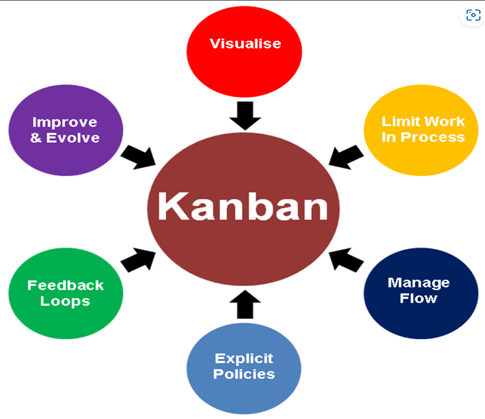
- Flow management:
Continuous improvement is an important goal in Lean Manufacturing. Kanban helps this facet by giving real-time information about materials and production flow. Analyzing how the cards on the Kanban move through the system helps teams identify areas of inefficiency, bottlenecks, or waste, and then make incremental process improvements. The process is frequently checked and managed so that the work does not go back but in a systematic order from one stage to the other.
A good kanban system comprises many parts that work well with one another to maximize efficiency.
- Kanban Cards
Kanban cards are physical or visual indications that represent work items. Normally, each card comprises the following information: description, responsible person, and deadline. The cards progress through the workflow as every task moves through its life cycle from initiation to closure.
- Kanban Boards
The visual workflow coming from the Kanban boards breaks down into columns representing a different stage of the process. Such an arrangement allows team members to see in advance what has been completed and what has not yet been accomplished. This approach ensures that all team members are in unison when it comes to priorities.
- Work-in-Progress Limits
WIP limits prevent bottlenecks by limiting the number of tasks allowed in each column at any given time. It encourages teams to focus on completing existing tasks before taking on new ones, hence improving flow and reducing cycle time.

Benefits of Implementing Kanban in Manufacturing
- Lowering Inventory Costs
One of the biggest advantages of Kanban is inventory reduction. Traditionally in manufacturing firms overproduce because of a concern of running out of stock thereby having unsold goods or stock that cannot be used because it was overproduced. The Kanban system utilizes a pull system where a firm only replenishes supplies based on actual demand versus a forecast. This provides reduced levels of inventory throughout the supply chain, thus resulting in
- Cash Flow Improvement
Since Kanban maintains just-in-time (JIT) inventory levels, companies do not tie up large sums of money in excess stock. It can thereby improve liquidity and free up capital to be invested elsewhere in the business. And since materials are ordered and consumed based on demand, companies can harmonize their production costs with actual sales and thus control cash flow much better.
- Increased Production Flexibility and Responsiveness
The pull system of Kanban can make manufacturers more responsive and relevant to changes in demand. In a Kanban system, control over the production of new materials or components relies on visual signals, production can immediately adjust to real-time demand, seasonal changes, or any other unexpected change in the pattern of customer orders. Flexibility of this nature prevents both overproduction when demand is slow and the inability to honor spikes in sudden increases in demand without drastic changes in the scheduling of production.
- Reduction of lead time
With Kanban replenishment is allowed only in areas of need. By allowing replenishment only where needed, Kanban can reduce lead times in any integrated production process. Lead time is the time elapsed until such time that a product reaches the end of the manufacturing process, raw material through to finished goods. Through Kanban, this process is more streamlined and predictable and allows for less stopping of production.
- Better Quality Control
Kanban generally inspires teams to work towards process improvements and quality control at each point of production. The system is transparent; hence possible bottlenecks, defects, or points where quality issues may arise can easily be noticed.
- Optimization of Workforce
Leveraging Kanban reduces the amount of material and work-in-progress items moving into the production line, which also optimizes workforce usage. With real-time visibility of the production line from Kanban, workers are far better equipped to know whether to start on new tasks or whether they can assist in solving bottlenecks.
Implementing Kanban in Your Production Line
Implementation of Kanban in your production line would significantly improve operational efficiency, and waste reduction, and ensure that only what is needed gets made when it is actually needed. These four steps- workflow mapping, definition of the system, team training, and continuous improvement—let you establish a lean, flexible, and responsive production process in your company.
- Analysis of Current Processes: Analyze the current workflows so you know where Kanban could be introduced to maximize the benefits.
- Definition of Workflows: Identify and define the manufacturing process stages and the associated work to be done at each stage.
- Set up visual boards representing your workflows: Ensure that all individuals within the team have easy access and can quickly comprehend the boards.
- Create Kanban Cards: Develop Kanban cards for every task, with necessary information like priorities and deadlines.
- WIP Limits: Establish WIP limits at every stage of the process to manage the workload and improve flow.
- Track and Adjust: Monitor and adjust the Kanban system to improve processes continuously.
Common Issues and Solutions to Implement Kanban
Kanban, therefore, is not a one-time fix, but rather a dynamic process that, step by step, unfolds over time. It is likely to turn your production line into a lean and high-performance production if the process is applied correctly and commitment to continuous improvement is fully adopted. Along with the pros, some issues might need your focus before get started
- Change Resistance: Most team members resist adopting the new system. Solution: Provide training and outline how Kanban will help you.
- Poor Visualization: If the visualization tools are not used properly, then the system may become cluttered. Solution: Boards and cards should be updated regularly, and everyone on the team should be able to view them.
- Poor WIP Limit Management: Teams will struggle to maintain WIP limits. Solution: Monitor WIP limits periodically and adjust them according to team capacity and workflow efficiency.
Kanban and Scrum: A Comparison cum Combination
Although Kanban and Scrum are centered on the improvement of workflow, they differ in their structure. Scrum utilizes a fixed-time iteration called sprint with definite roles such as Scrum Master and Product Owner. Kanban, however, is more fluid in its structure and utilizes continuous flow with no defined iterations. The teams may choose one according to the requirements of the projects or even mix and match elements of both.
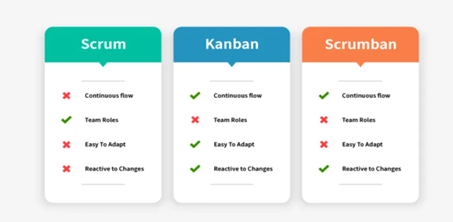
Integrating Kanban with Six Sigma
Kanban will supplement the Six Sigma methodology by providing a visual tool for tracking the processes and how determining the areas to be improved. Combining these two frameworks will allow quality control and simplification of the production processes.
Tools and Software for Managing Kanban in Manufacturing
There are many tools for managing kanban in the manufacturing sector, among which are:
- Trello: This tool has a simple interface of a Kanban board and is suitable for small to medium-sized teams.
- Jira: Jira is a very powerful tool for software development teams. It offers capabilities like Kanban boards and agile reporting.
- LeanKit: This is specifically designed for lean management. LeanKit supports complex workflows with multiple board views.
- Planview: These are enterprise-level Kanban tools that integrate with different project management methodologies.
The Future of Kanban in Manufacturing
The methodology of Kanban is expected to transform in line with the developing trends of manufacturing, which are automation and digital transformation. Artificial intelligence and machine learning will likely be the features that make Kanban systems even more insightful and powerful in workflow optimization and productivity.
In a nutshell, Kanban proves to be an effective methodology for lean manufacturing, using its principles and components toward maximum efficiency and productivity. Understanding it and how these elements can be applied in practice will mean that any organization will see effective implementation, overcome some common pain points, and enjoy benefits in terms of a less complicated production process.
No matter whether new to the concept of Kanban or you are fine-tuning your processes, embracing this methodology will keep your team one step ahead in the complex world.

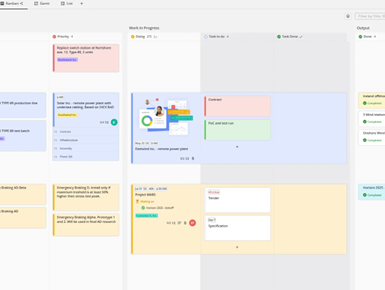
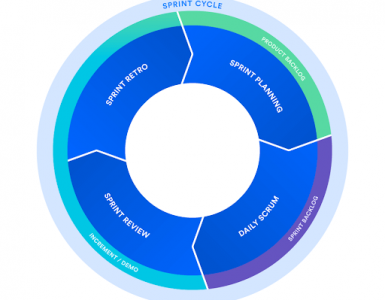
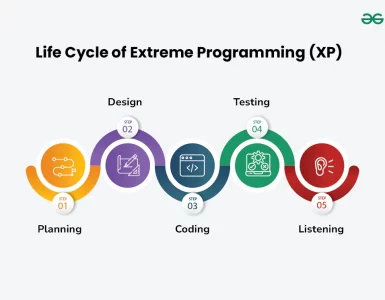

Add comment